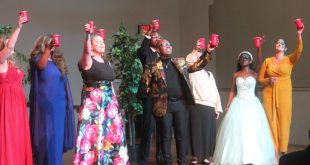Written By: Austin Wells
The Republican party’s overwhelming victory on Tuesday night can be at least partly explained by past history, according to a political science professor at VSU.
Dr. Richard Saeger, a political science professor at VSU, explained how the Republican party’s success shouldn’t come as a surprise considering the president’s low popularity.
“It seems to be against the presidency even though he’s not running,” Dr. Saeger said. “Most of the focus of the campaigns are against Obama.”
Dr. Saeger explained how the party in control tends to be the losing party on Election Day.
“The party out of power generally does very well,” Dr. Saeger said. “In a couple of years it’ll be the other way around.”
Following the election, the Republican Party now has the majority in both the Senate and the House of Representatives, also giving them full control of Congress.
Among the 32 states that voted for a senator, 20 of those states voted for the Republican candidate. Georgia was among those states as David Perdue received 53 percent, beating out Democrat nominee Michelle Nunn. It wasn’t as close in Lowndes County, as the county gave Perdue 58.6 percent of the vote.
Not much will change for the House of Representatives as the majority of the votes went the Republican’s way there as well. This is also true for Georgia.
Of the seven districts that had two nominees, only one Democrat won, and that was Sanford Bishop of District 2. Buddy Carter , Tom Price, Rob Woodall, Doug Collins, Jody Hice and Rick Allen are the rest of Georgia’s district winners and are all Republican.
Among the 32 states that voted for a governor, only 11 of those states voted for a non-Republican nominee (10 voted Democrat and Alaska voted for an Independent). Georgia continued to vote as it did with the Senate and House, re-electing Republican candidate Nathan Deal as governor.
The voter turnout for Lowndes County was 44.85 percent, and among that percentage, the college-aged demographic was the second highest voter group. The only age group surpassing the college-aged group was the 65+ age group, meaning that many young adults in Valdosta had a say in this year’s election.
Several students spoke on the 2014 election and particularly why they feel it’s important.
Henry Bochner, sophomore mass media major, said, “We as a people have a say. It’s important to use the voice we have and make it count.”
Jalene Snowden, sophomore mass media major, shared her thoughts on the election and its importance as well.
“I was pulling for the Democratic nominees to win,” Snowden said. “Unfortunately, I wasn’t able to vote this year but the election means a lot. It’s our future and I can’t believe I didn’t take part in voting for our future. I’ll be sure to vote next time.”
The next elections will take place in 2016, when the presidency will be voted on as well.
 The Spectator The independent student newspaper of Valdosta State University
The Spectator The independent student newspaper of Valdosta State University







